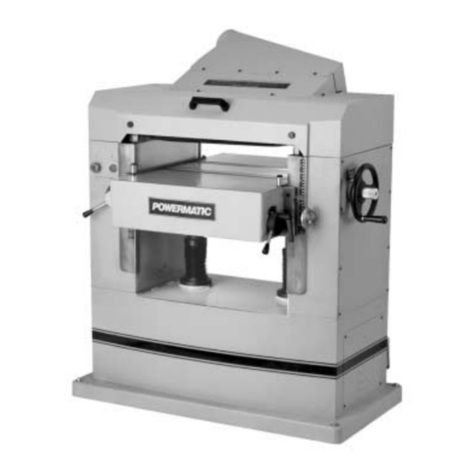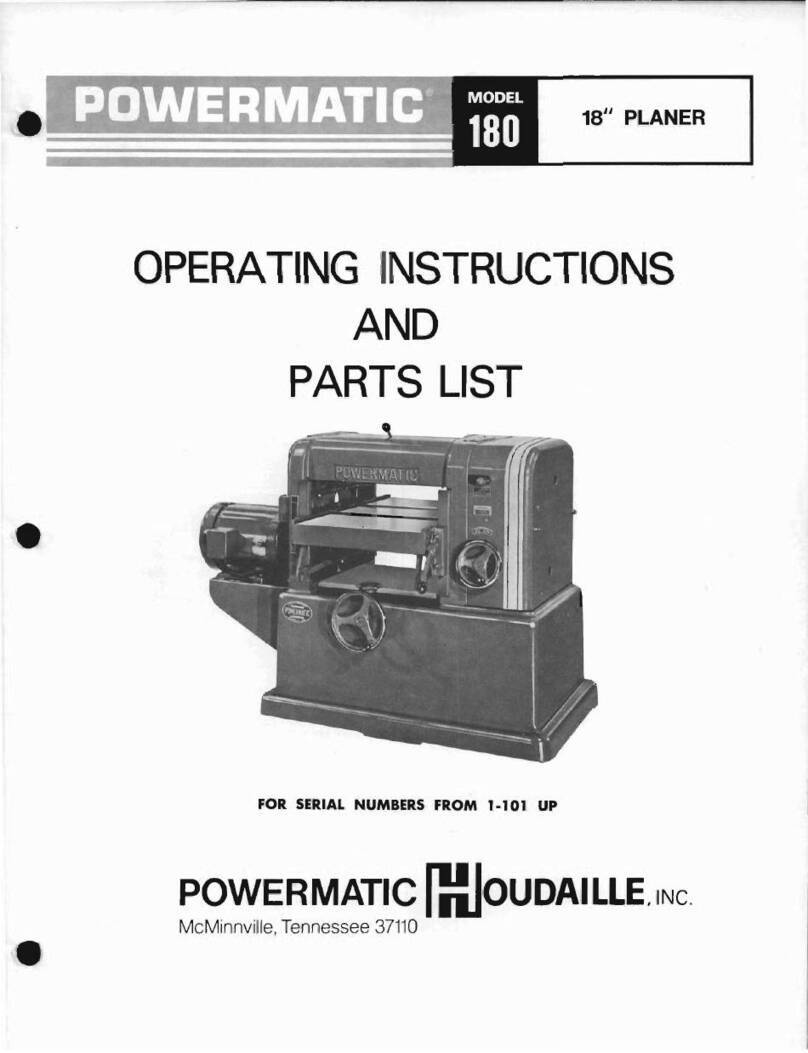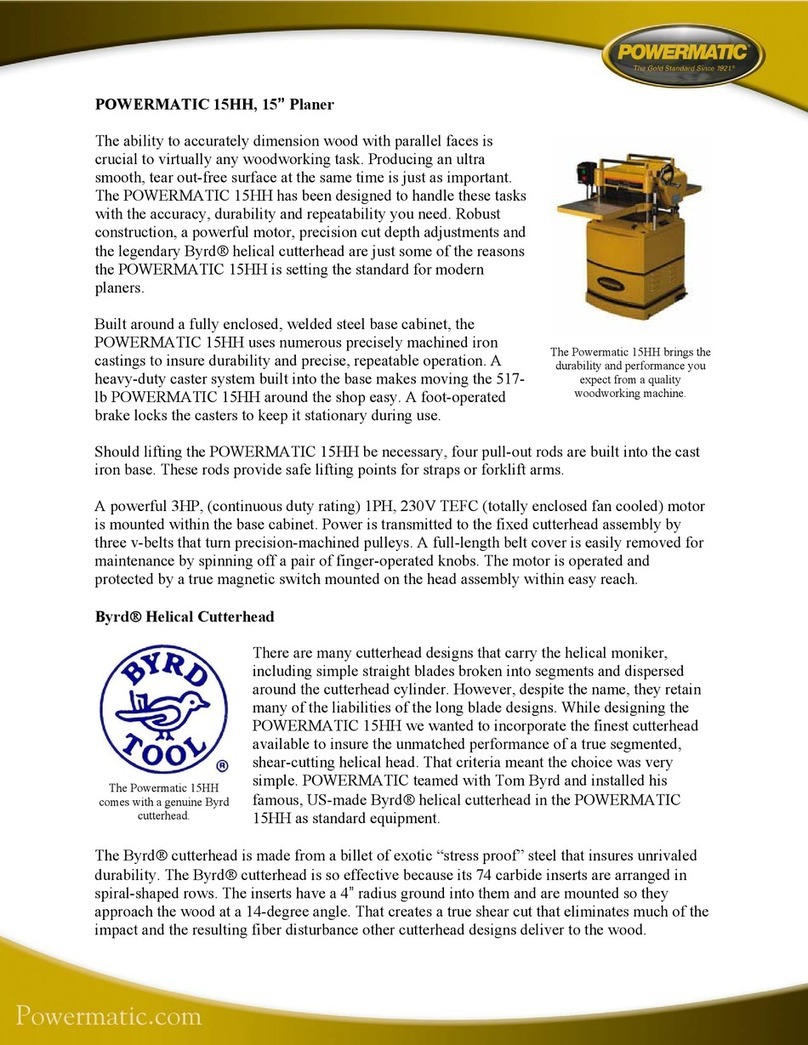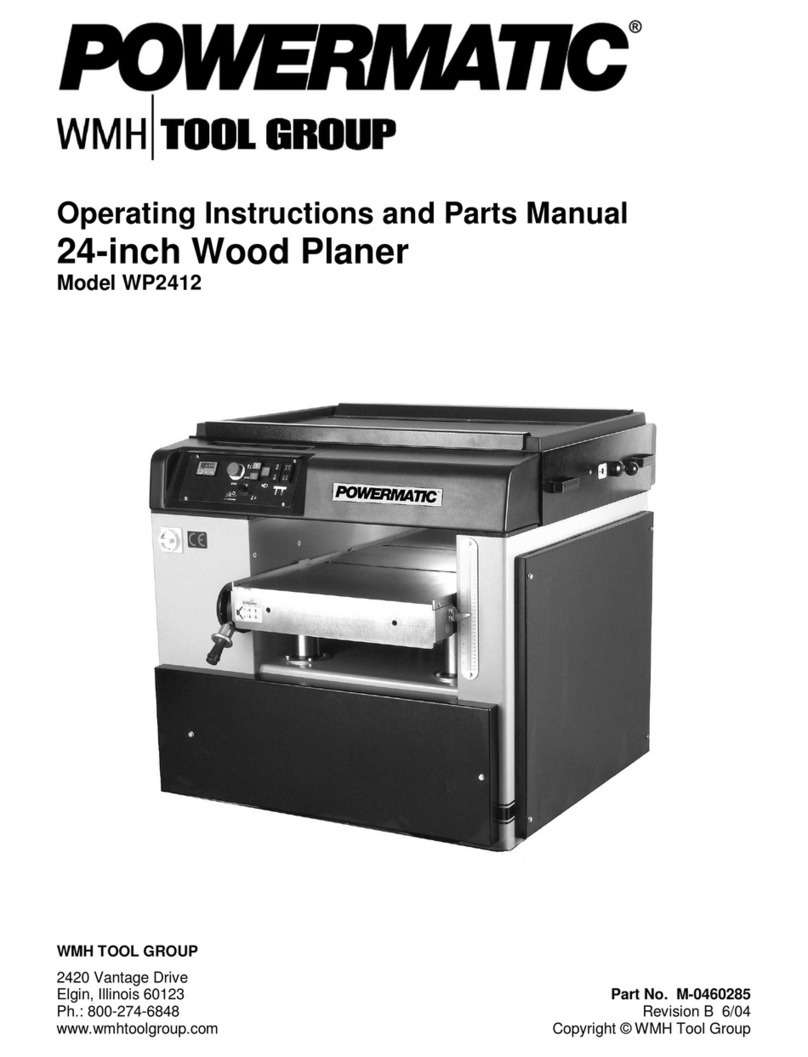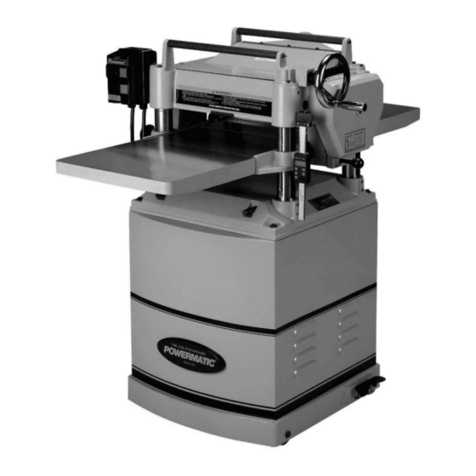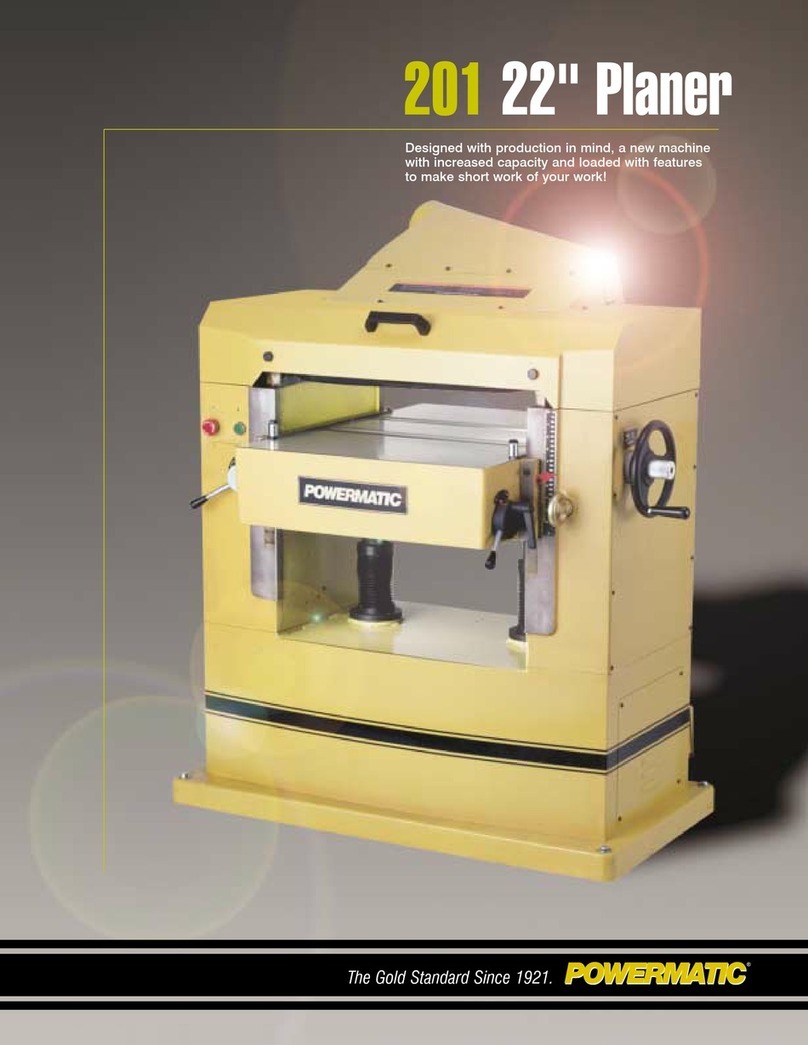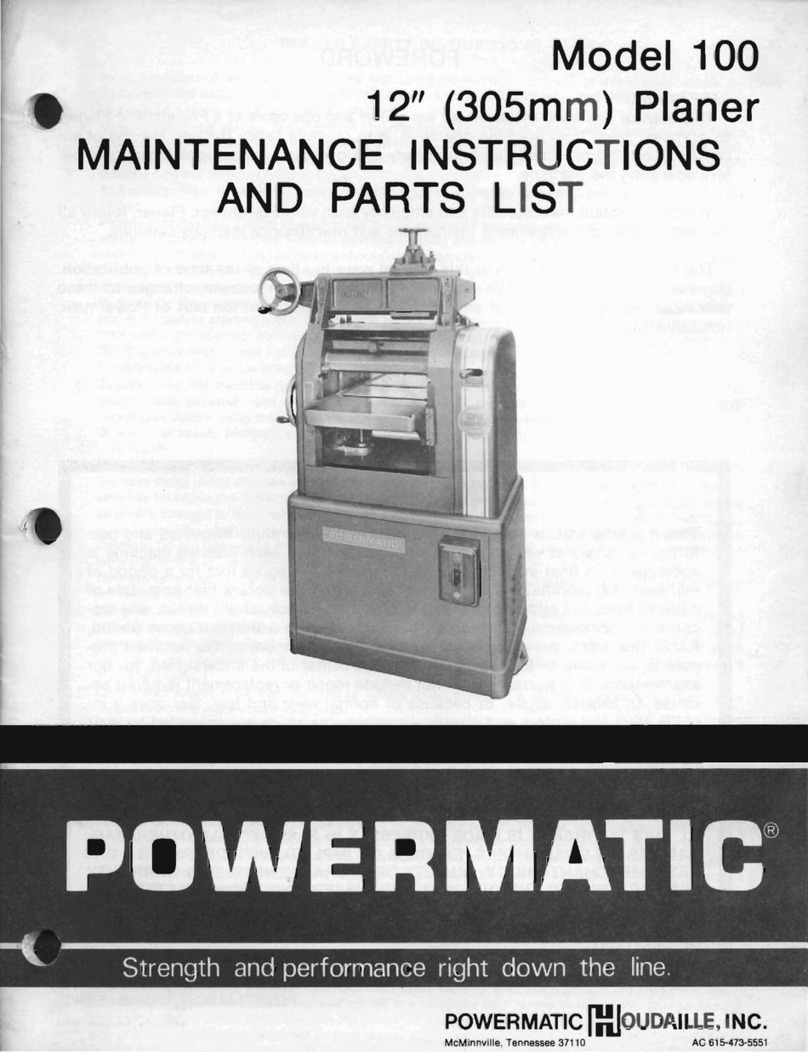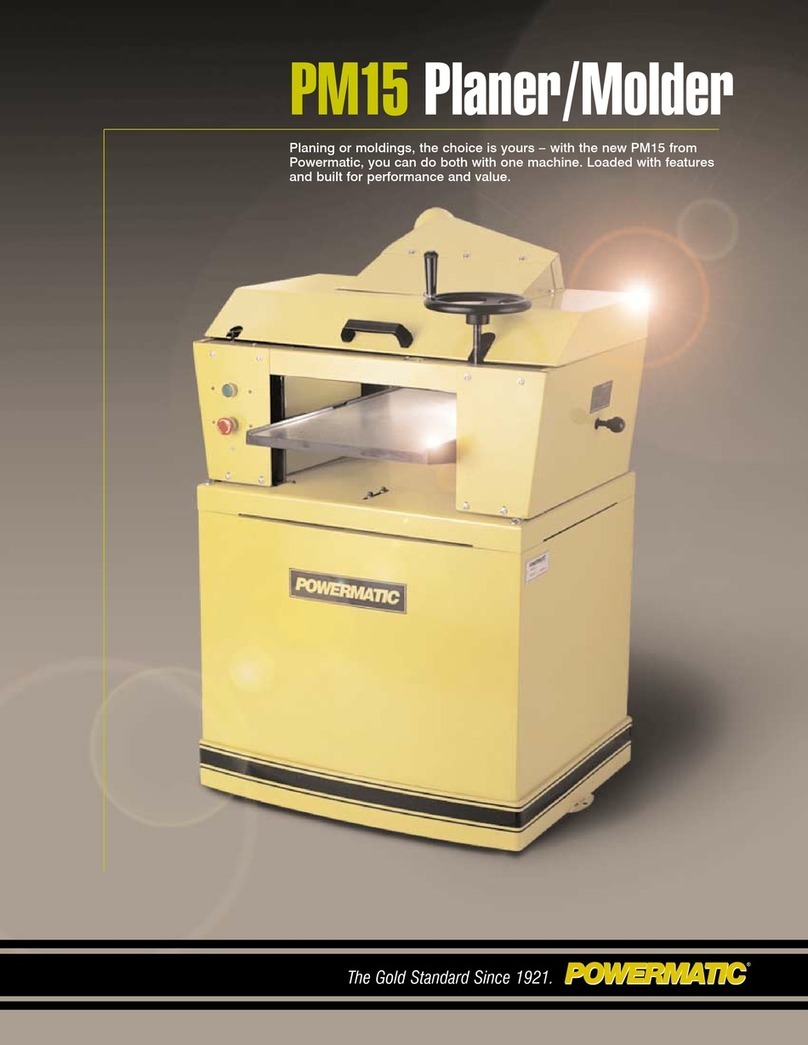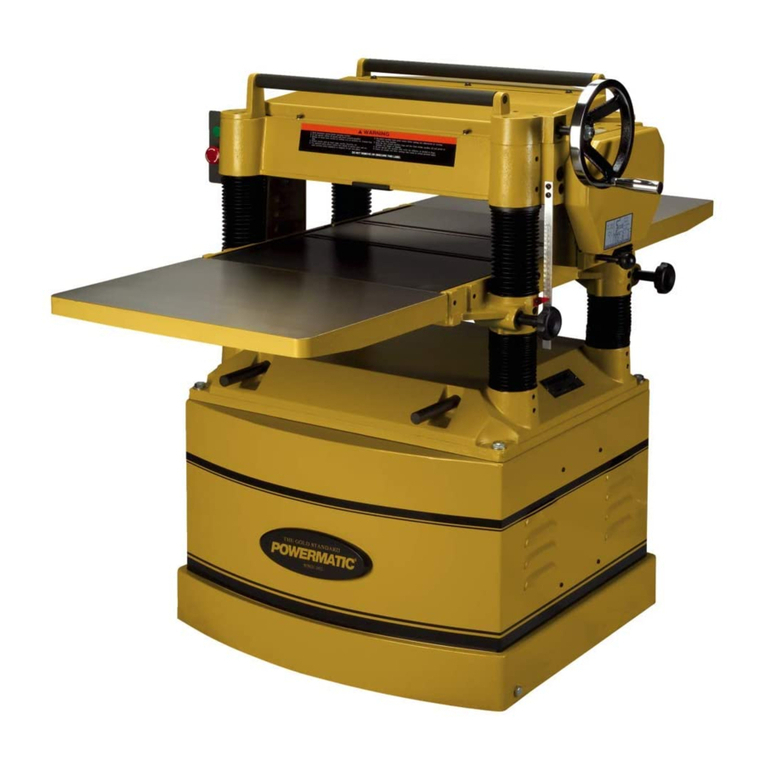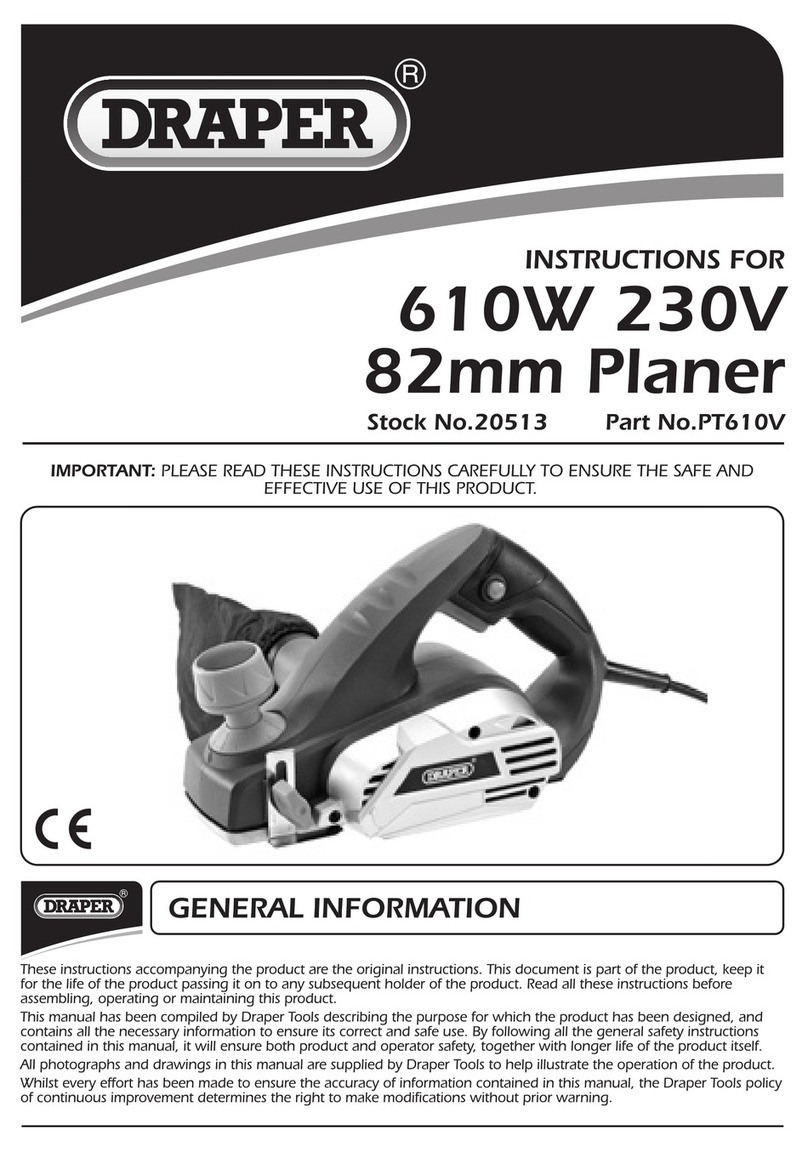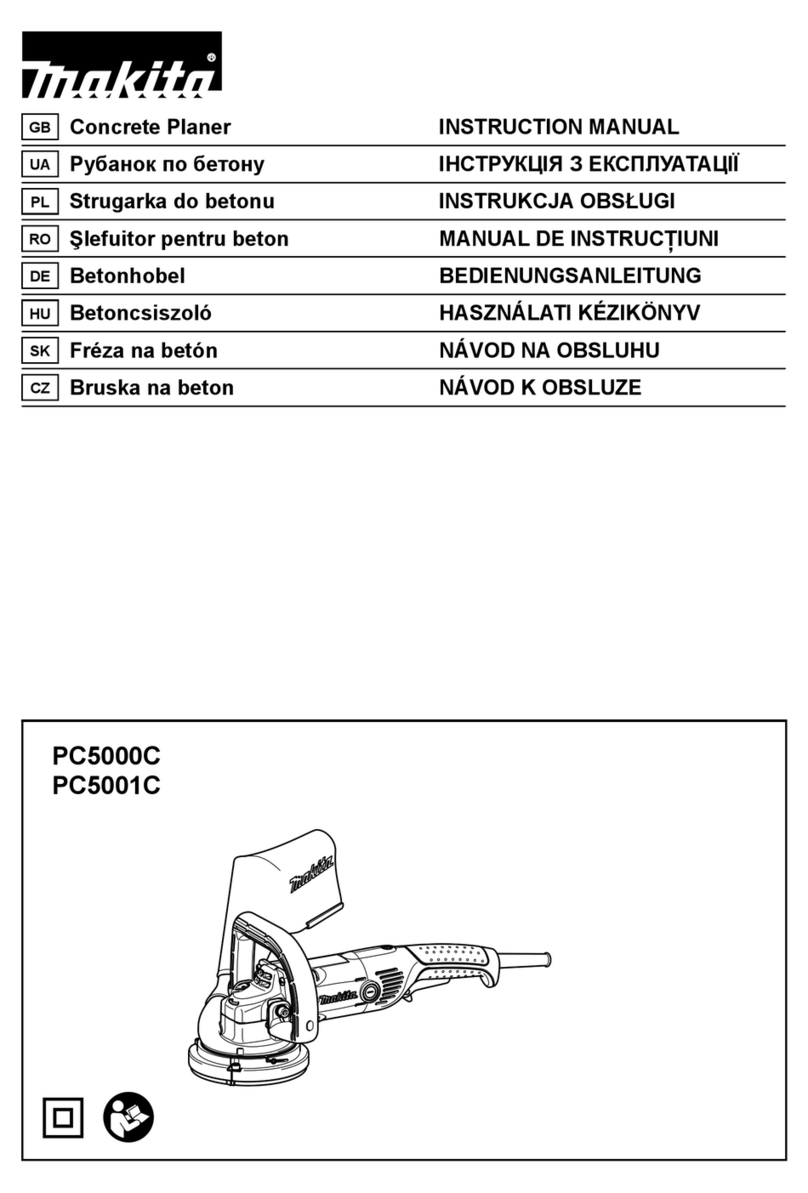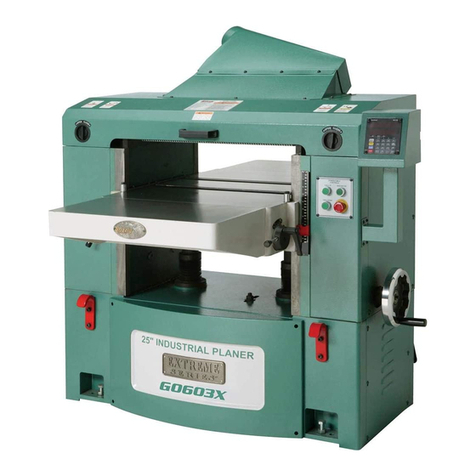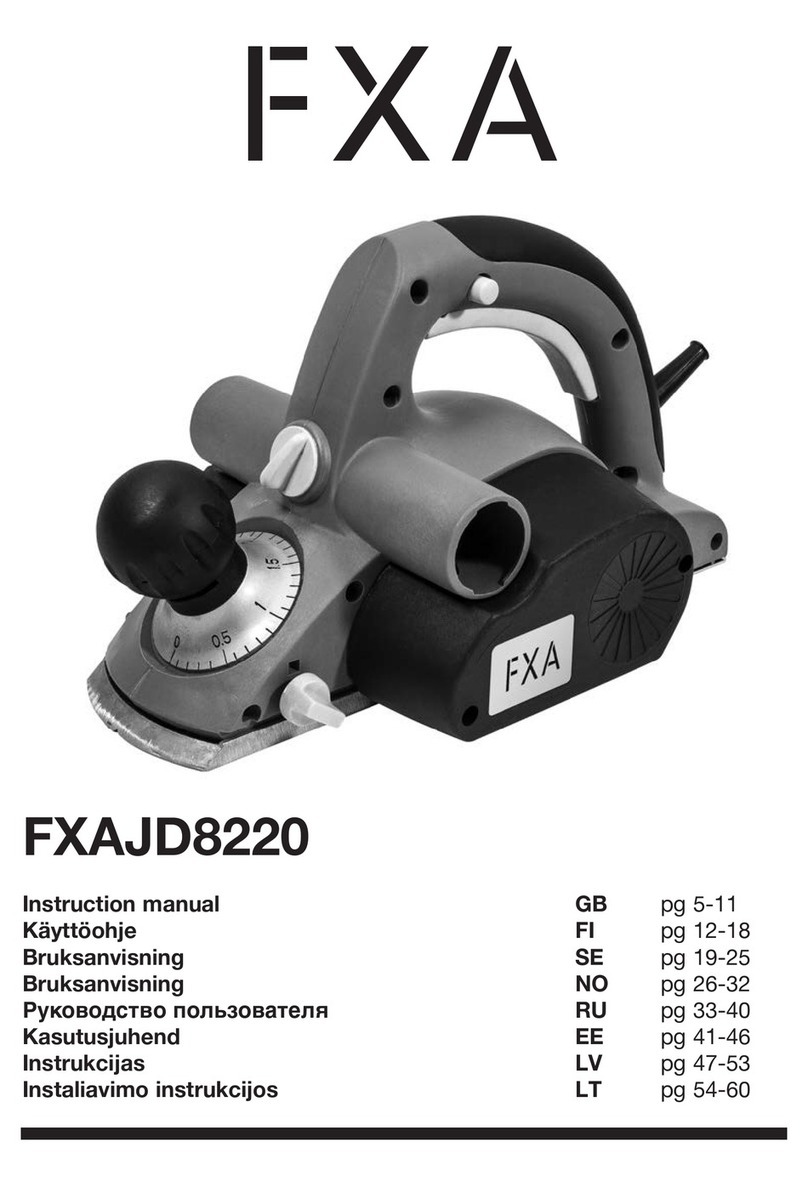Model 100-12"
Planer
HOLDDOWN
BAR:
FEED
DRIVE
BELTS:
MATERIAL
THICKNESS
GAUGE:
CUTTERHEAD:
KNIFE
CARE:
Page
6
OPERATING INSTRUCTIONS
The holddown
bar
is
adjusted
with
adjusting
nuts
(14) and
should be
adjusted
.003" below
arc
of
cutter
head knife. To ad-
just
holddown
bar,
loosen lock
nut
and
turn
adjusting
screw
(14) to
the
right
to
raise
and
to the
left
to lower.
To
adjust
feed belts, loosen
nuts
(20)
on the inside of
planer
frame
and
slide
studs
in slots until belts have
proper
tension.
If
machine does not feed properly remove
guard
and check for
belt slippage.
The infeed
and
outfeed rollers have
grea
se fittings (8) and
(9).
Feed drive sheaves
are
lubricated
at
(16) and
(17).
These
fittings
require
greasing
every ten (10) hours of operation with
No.1
grease,
or
a light weight type.
Planer
bed ways, bed
raising
screws, bed idle roller bearings
should be greased every ten
(10)
hours
of operation
with
SAE
No. 10 oil
or
equivalent.
To set
the
indicator on the
material
thickness scale (6) to indi-
cate
properly
after
changing knives, loosen
the
screw in the
planer
bed which holds
the
brass
pointer
and set to
the
thickness
the
material
measures when planed or fed
through
the
machine.
The hole which mounts the
brass
pointer
is slotted
and
will per-
mit
proper
adjustment.
The
cutter
head is equipped
with
three
knives held in position
with
the
lock shims
and
set screws
(10).
Knives
must
be ad-
justed
to
set
evenly and level in the
cutterhead.
Before remov-
ing knives from cutterhead,
the
knife
gauge
should be adjusted
to
the
height
of
the
knives. so
the
height
of
the
knives will not
be changed relative to the
other
parts
of
the
head when the
knives
are
replaced. The feed rollers,
chipbreaker
and pressure
bar
are
adjusted
to the
arc
of
the
knife
cut.
If
the height of
the
knives
are
raised
or
lowered, the feed rollers, chipbreaker
and
pressure
bar
should be
adjusted
accordingly. Knives should
not
protrude
more
than
.030" beyond
radius
of cutterhead.
When replacing knives
after
sharpening,
place
the
"jack
screw"
studs
in place
making
sure
the
"step"
will
act
as a seat
for
the
knife. Drop knife
and
shim into
cutterhead
slot so
that
the
beveled edge of knife is
just
below
the
surface
of the head.
Tighten
the two outside knife shim screws
just
enough to hold
the
knives snugly in the head., With knife
settin~
gauge in
place over one
extreme
end of
the
head,
turn
the
allen screw in
"jack
screw"
plugs,
raising
knife until knife touches stop on
knife
setting
gauge. Repeat operation on
other
end of
the
cut-
terhead.
Next,
tighten
the
center
knife
locking shim bolt. Set
the
other
knives in
the
cutterhead
before
tightening
remainder
of
the shim bolts.
After
th~
knives have been set, final locking
of knives should be done by
rotating
cutter
head and locking all
shims uniformly.
CAUTION-If
one knife is locked tightly
before
the
others,
it
may
spring
the
cutterhead
and cause vi-
bration
or
uneven knife height.
IMPORTANT:
Knives should be kept
sharp.
The knives
do
all
of
the
work
and
they
will
not
do
satisfactory
work
if
they
are
DULL. The sets of knives
are
matched and balanced
at
the
factory. When
the
knives
are
sharpened, care should be taken
that
they
are
kept
in balance.
POWERMATIC,
McMinnville,
Tenn.
